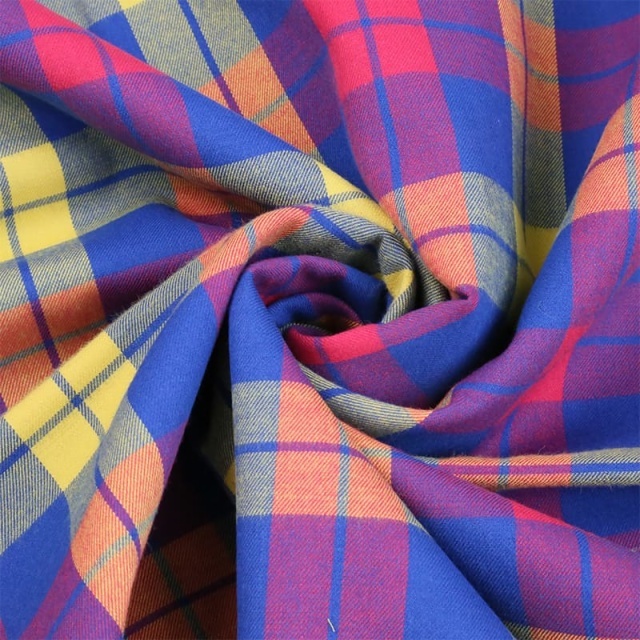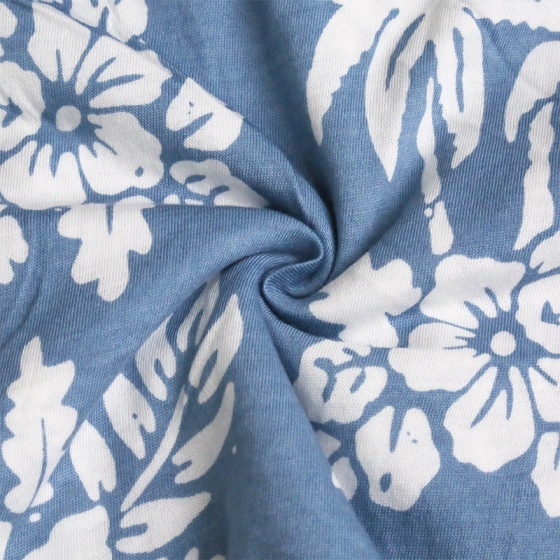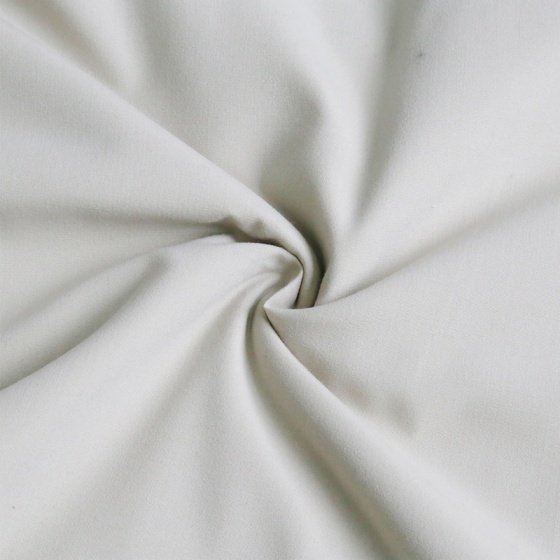Comparing Cotton Dyed Fabric to Synthetic Alternatives: Essential Insights for Informed Choices
Aug 12,2025
Comparing Cotton Dyed Fabric to Synthetic Alternatives: What You Need to Know
In the textile industry, the choice between cotton dyed fabrics and synthetic alternatives is one that involves numerous factors, including environmental impact, cost, and performance. Each type of fabric possesses unique characteristics and offers distinct advantages and disadvantages. In this detailed exploration, we will delve into the nuances of cotton dyed fabric and synthetic alternatives, helping you make an informed decision tailored to your specific needs.
The Rise of Cotton Dyed Fabrics
Cotton dyed fabrics have long been celebrated for their softness, breathability, and versatility. As a natural fiber, cotton is derived from the cotton plant, and its popularity can be attributed to several key factors:
Natural Characteristics of Cotton
Cotton is biodegradable, making it an environmentally friendly choice compared to synthetic options. Its fibers absorb moisture effectively, providing comfort in warm climates. Additionally, cotton dyed fabrics possess excellent dye retention, allowing for vivid colors and patterns that can withstand the test of time.
Applications of Cotton Dyed Fabrics
From clothing and home textiles to industrial applications, cotton dyed fabrics are immensely versatile. They are commonly used in:
- Apparel: T-shirts, jeans, dresses
- Home Decor: Curtains, upholstery, bed linens
- Industrial Uses: Medical textiles, protective clothing
Understanding Synthetic Alternatives
Synthetic fabrics, derived from petrochemicals, have surged in popularity due to their durability, cost-effectiveness, and performance. Common types include polyester, nylon, and spandex. Let’s explore what makes these materials appealing:
Durability and Performance
Synthetic fabrics often outperform natural fibers in terms of durability. They resist wear and tear, are less prone to wrinkling, and dry quickly. This makes them ideal for activewear and outdoor gear, where performance is paramount.
Cost-Effectiveness
One of the most significant advantages of synthetic fabrics is their affordability. Mass production and lower material costs mean that synthetic alternatives often come at a fraction of the price of cotton dyed fabrics.
Comparing Environmental Impact
As consumers become increasingly conscious of their environmental footprint, the sustainability of textiles is a growing concern. Let's compare the environmental impacts of cotton dyed fabrics and synthetic alternatives:
Cotton and Sustainability
Organic cotton, in particular, presents a more sustainable option compared to conventional cotton farming, which can involve heavy pesticide use. However, the water consumption associated with cotton cultivation is substantial, raising concerns about water scarcity in some regions.
Synthetic Fabrics and Environmental Considerations
While synthetic fabrics may be durable, their production process contributes to environmental degradation. The petrochemical extraction process is energy-intensive, and the resultant materials are not biodegradable, leading to significant waste in landfills. Additionally, microplastics from synthetic textiles pose a serious threat to aquatic ecosystems.
Comfort and Wearability
The comfort of a fabric can greatly influence consumer preference. We will analyze how cotton dyed fabrics and synthetic alternatives fare in terms of comfort:
Breathability of Cotton
Cotton’s natural fibers allow for excellent airflow, making it an ideal choice for hot and humid conditions. This breathability promotes comfort, reducing the risk of overheating during wear.
Moisture-Wicking Properties of Synthetics
Synthetic fabrics, such as polyester, often come equipped with moisture-wicking technology, making them suitable for athletic wear. These fabrics draw moisture away from the body, keeping the wearer dry and comfortable during rigorous activities.
Color Retention and Maintenance
When it comes to maintaining the vibrancy and longevity of colors, cotton dyed fabrics and synthetic alternatives exhibit different behaviors:
Color Fastness in Cotton
Cotton dyed fabrics can maintain vibrant colors with proper care. However, they can fade over time, especially if exposed to harsh detergents or sunlight.
Synthetic Fabrics and Color Retention
Synthetic fabrics typically boast superior color retention, maintaining their vibrant hues through multiple washes. This characteristic makes them popular in fast fashion, where trends change rapidly.
Cost Analysis: Cotton vs. Synthetic Fabrics
Understanding the cost implications of each fabric type is crucial for both consumers and manufacturers. Here’s a breakdown:
Price of Cotton Dyed Fabrics
Cotton dyed fabrics tend to be more expensive due to the cost of raw materials, cultivation, and dyeing processes. However, their durability and comfort often justify the higher price point.
Affordability of Synthetic Options
Synthetic alternatives often present a more budget-friendly option, appealing to consumers seeking affordable clothing and textiles. While the initial cost is lower, the potential environmental costs could factor into long-term decisions.
Trends in Textile Production
The textile industry is continuously evolving, and recent trends are influencing the production and use of cotton dyed fabrics and synthetic alternatives:
Shift Towards Sustainable Practices
Consumers are increasingly demanding transparency and sustainability. As a result, many textile manufacturers are adopting eco-friendly practices, including the use of organic cotton and recycled synthetic materials.
The Rise of Blended Fabrics
Blended fabrics, which combine cotton with synthetic fibers, are gaining popularity. This hybrid approach aims to leverage the strengths of both materials, offering enhanced performance without sacrificing comfort.
Future Outlook: What Lies Ahead for Textiles?
As we look to the future, the textile industry will continue to grapple with balancing quality, sustainability, and consumer demand. Innovations in fabric technology are likely to reshape the landscape, providing new opportunities and challenges:
Advancements in Sustainable Materials
Research into sustainable materials, including bio-based fabrics and advanced recycling technologies, will play a pivotal role in future textile production. These advancements aim to minimize environmental impact while maximizing performance.
Consumer Education and Awareness
As consumers become more informed about their textile choices, manufacturers will need to adapt. Transparency in sourcing and production methods will be critical in building trust and loyalty among eco-conscious shoppers.
Frequently Asked Questions (FAQs)
1. What are the main differences between cotton dyed fabric and synthetic fabrics?
Cotton dyed fabrics are natural, breathable, and biodegradable, while synthetic fabrics are durable, moisture-wicking, and often more affordable.
2. Is cotton dyed fabric suitable for outdoor activities?
While cotton is comfortable, it may not be ideal for intense outdoor activities due to its moisture retention. Synthetic fabrics are generally better for such conditions.
3. How can I maintain the color of my cotton dyed fabrics?
To maintain vibrancy, wash cotton dyed fabrics in cold water, avoid harsh detergents, and dry them in the shade.
4. Are synthetic fabrics harmful to the environment?
Synthetic fabrics can contribute to environmental degradation due to their production processes and the release of microplastics into ecosystems.
5. What is the most sustainable option: cotton or synthetic fabrics?
Organic cotton is often considered more sustainable than conventional cotton or synthetic fabrics due to its minimal environmental impact and biodegradability.
Conclusion
Choosing between cotton dyed fabrics and synthetic alternatives requires careful consideration of various factors, including comfort, environmental impact, durability, and cost. While cotton offers natural qualities that appeal to many, synthetic fabrics present advantages in performance and affordability. As the textile industry evolves, it is essential for consumers to remain informed about their choices, considering both immediate needs and long-term implications. The future of textiles lies in sustainable practices, innovative materials, and a balanced approach to production that aligns with consumer values. By understanding the differences, benefits, and limitations of both fabric types, individuals can make empowered decisions that best suit their lifestyle and ethical preferences.
More Events
Comparing Cotton Dyed Fabric to Synthetic Alternatives: Essential Insights for Informed Choices
Comparing Cotton Dyed Fabric to Synthetic Alternatives: What You Need to Know In the textile industry, the choice between cotton dyed fabrics and synthetic alternatives is one that involves numerous factors, including environmental impact, cost, and performance. Each type of fabric possesses unique characteristics and offers distinct advantages and disadvantages. In this detailed exploration, we w
Aug 12,2025
Exploring the Versatile World of Printed Cloth Fabrics
In the textile industry, printed cloth fabric represents a dynamic and multifaceted segment that offers endless opportunities for creativity and innovation. The process of printing on fabrics allows for the incorporation of vivid designs and patterns, making textiles not only functional but also aesthetically appealing. This article will explore various techniques, applications, and considerations
Aug 11,2025
Behind the Scenes: The Fabric Choices of High-End Men's Shirts
Behind the Scenes: The Fabric Choices of High-End Men's Shirts Understanding High-End Men's Shirts High-end men's shirts represent an intersection of luxury, craftsmanship, and sophistication. Choosing the right fabric is pivotal as it affects not just the look, but also the feel and durability of the shirt. In this article, we delve into the various fabric choices available and how they contribut
Aug 10,2025
Do Not Heasite To Contact W&S, Your Comprehensive Solution Provider Now!
We like produce phone cases but we more like to see you earn lots of money by working with us.
Quick Link
Garment
Copyright © Nantong Wang and sheng Textile Co., Ltd. All Right Reserved.

Whatsapp: 008613861954999
Looking forward to your call
Tel: 0086-513-80609999
Looking forward to your call
Email: Nick.wang@ntwangsheng.com
Looking forward to your letter





